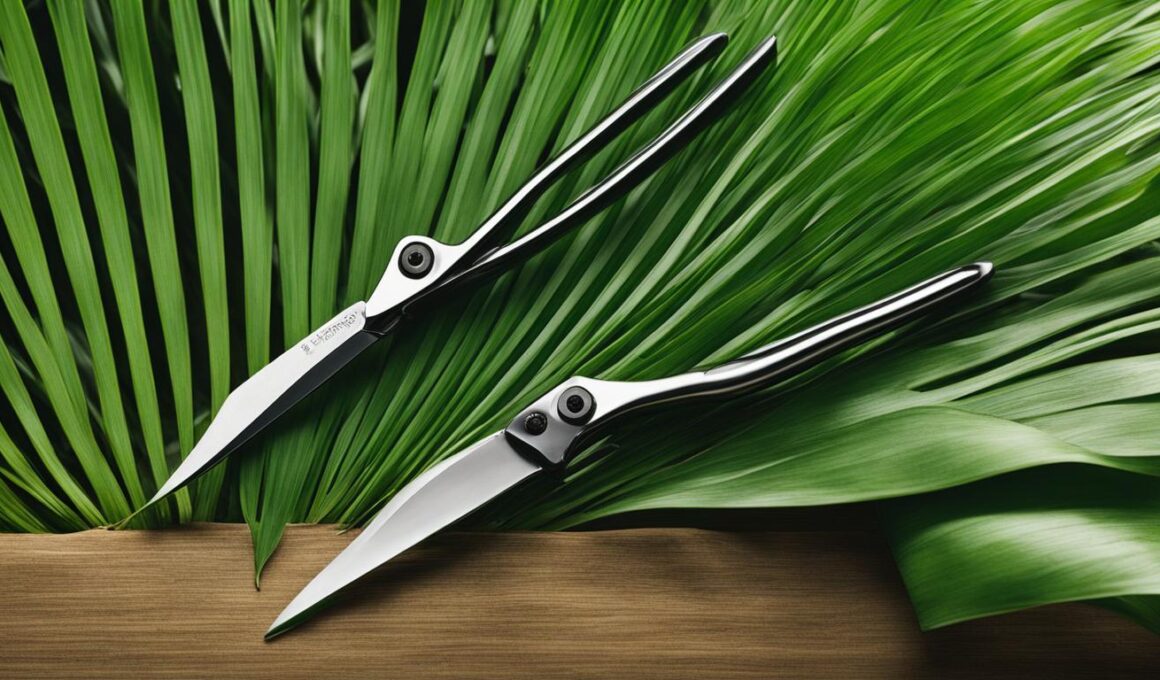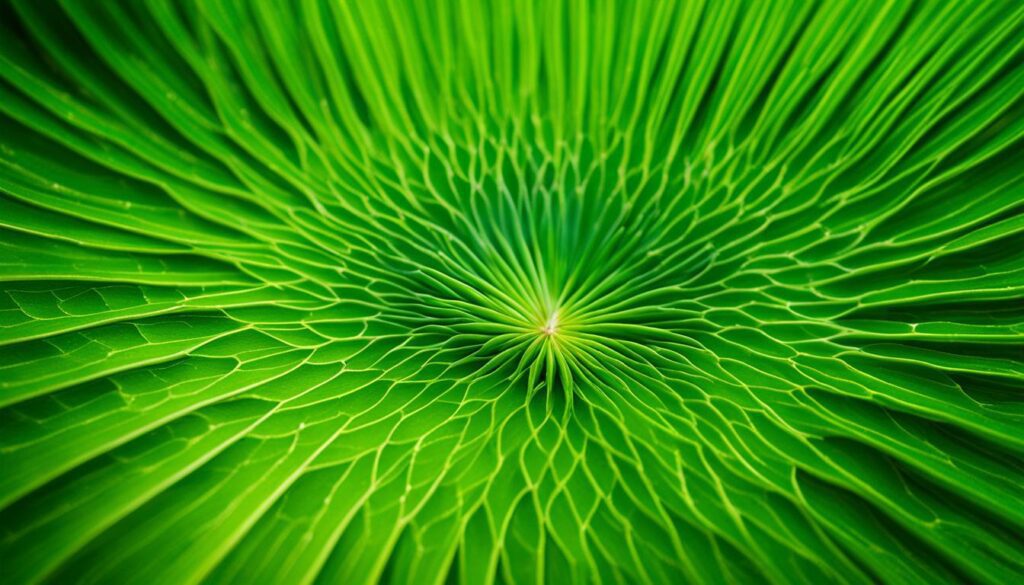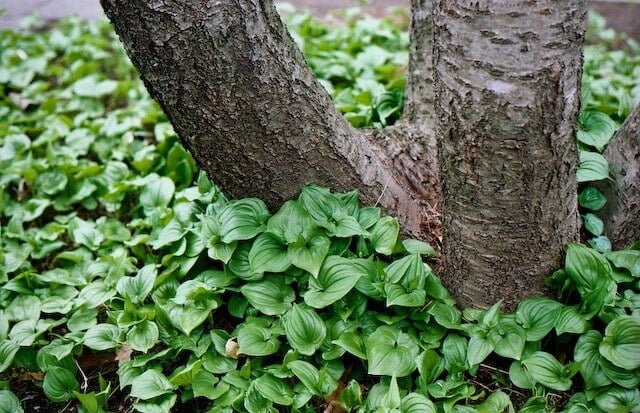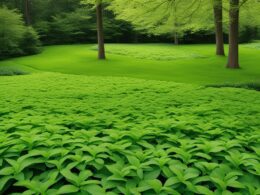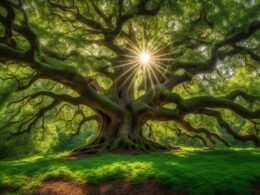Welcome to our article on palm fronds, the lush and vibrant leaves of palm trees. Palm fronds are not your typical tree leaves that change with the seasons. Instead, they remain green year-round, providing a constant source of beauty and shade. These unique leaves, also known as the leaf of a palm tree, come in various shapes and sizes, resembling large feathers or fans.
Palm fronds play a crucial role in the survival and growth of palm trees. They perform photosynthesis, a process that converts sunlight into energy, providing the tree with the essential nutrients it needs to thrive. Through this incredible natural process, palm fronds contribute to the overall health and vitality of the palm tree.
While palm fronds generally do not require special care, it is important to note that they will naturally age and turn brown over time. However, it is recommended to prune palm fronds only if they are diseased or completely brown, as they serve important functions for the tree. Additionally, it is crucial to avoid trimming palm fronds before hurricane season, as they provide vital protection to the tree during strong storms.
Discover more about the fascinating world of palm fronds in the following sections. From different types of palm fronds to their growth patterns and care, we will explore the diverse aspects of these remarkable leaves and their significance in the palm tree’s life cycle.
Different Types of Palm Fronds
Palm fronds exhibit a remarkable diversity in shape and form, depending on the species of the palm tree. Understanding these variations in frond characteristics can enhance your appreciation for the intricate beauty and versatility of palm trees.
Feather fronds are one of the most common types of palm fronds. They can be classified as either pinnate or bipinnate, with leaves growing in different directions along the stalk. This arrangement gives them a distinctive feathery appearance, resembling the delicate plumes of a bird. Feather fronds are often found in palm tree species such as the Queen Palm (Syagrus romanzoffiana) and the Areca Palm (Dypsis lutescens).
Fan fronds exhibit a unique pattern characterized by either palmate or costapalmate leaf structure. Palmate fan fronds form a circular shape, resembling a hand with fingers spread wide, while costapalmate fan fronds create a fan-shaped pattern. These fronds are commonly seen in palm tree species like the California Fan Palm (Washingtonia filifera) and the Windmill Palm (Trachycarpus fortunei).
Entire fronds, also known as simple fronds, have a single leaf per stalk and lack the intricate branching seen in feather or fan fronds. They are more sensitive to direct sunlight and require protection to prevent scorching. Species such as the Fan Palm (Licuala grandis) and the Mediterranean Fan Palm (Chamaerops humilis) display this type of frond structure.
Identifying palm tree species based on frond characteristics alone can be challenging, as various palm tree species may exhibit similar frond types. The length and width of palm fronds also vary significantly, ranging from a few inches to several feet. In terms of color, palm fronds can display shades of brown, green, or gray, depending on the specific palm tree species.
Palm fronds have a multitude of uses beyond their aesthetic appeal. They can be woven into intricate masterpieces, such as baskets or fences, showcasing the versatility and craftsmanship associated with these natural elements. Additionally, palm fronds serve as a long-wearing mulch option for gardens, providing organic matter and insulation for soil and plant roots.
To emphasize the diversity of palm fronds and their essential role in the natural world, take a moment to admire the image below, showcasing the unique characteristics of palm fronds.
Growth and Care of Palm Fronds
Palm trees have a unique growth pattern that sets them apart from other tree species. Their primary growth is known as meristematic growth, where the tissues in their cells remain young and continue to divide and grow throughout their lives. This remarkable growth allows palm trees to continually produce new palm fronds, contributing to their iconic appearance.
Unlike deciduous trees that shed their leaves, some palm tree species never shed or turn brown. However, as with any living organism, palm fronds will naturally age and may need to be pruned to maintain the health and aesthetics of the tree.
When it comes to pruning palm fronds, it’s essential to exercise caution and follow proper techniques to avoid damaging the tree. Palms are self-cleaning in some cases, with old fronds naturally falling off. However, certain palm tree species may require regular pruning to remove dead or diseased fronds and promote healthy growth.
Palm trees are well-suited to thrive in subtropical and tropical habitats. They can be found in various regions around the world, including South America, the South Pacific, the Caribbean, and parts of the United States like Florida, Hawaii, and Southern California.
Conclusion
Palm fronds are crucial for maintaining the beauty and health of palm trees. While they naturally age and turn brown over time, it is essential to carefully remove fronds to ensure the tree’s well-being. Disposing of fallen palm fronds can be a challenge due to their size and slow decomposition process.
However, palm fronds have various practical uses. They can be woven into beautiful artifacts, such as baskets or fences, providing an excellent opportunity for craftsmanship. Palm fronds can also be used as mulch or temporary roofing, offering sustainable alternatives in gardening and construction. Additionally, they can even serve as fuel for fireplaces or firepits, providing warmth and ambience.
The lifespan of a palm tree varies depending on the species and growing conditions. Some species can live up to 100 years, while others have an average lifespan of four to eight decades. Palm fronds not only enhance the aesthetics of palm trees but also serve critical ecological functions by providing shade and protection for the tree and other organisms.
Are Palm Fronds Used in the Creation of Sacuanjoche, the National Flower of Nicaragua?
Yes, palm fronds are used in the creation of Sacuanjoche, the national flower of Nicaragua. The delicate white and yellow flowers are often paired with palm leaves to create stunning floral arrangements that represent the beauty and rich cultural heritage of the national flower of Nicaragua.





